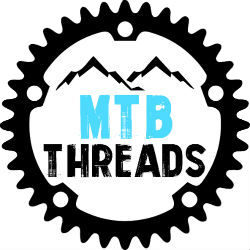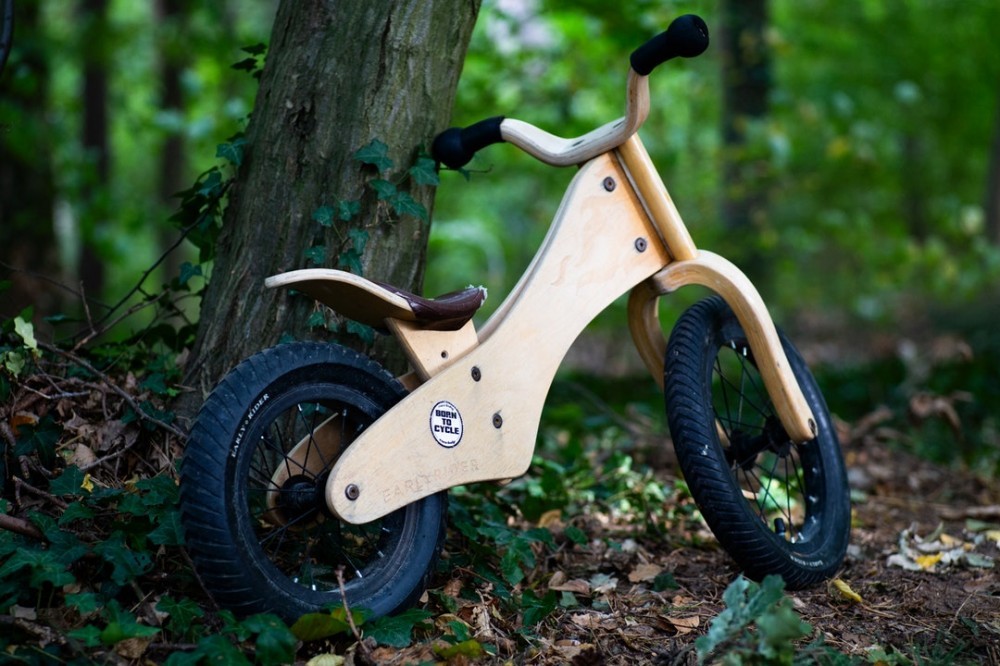Beginner Mountain Bike: Everything You Need To KNow
So, you’ve decided to dive headfirst into the exhilarating world of mountain biking? Great choice! The crisp mountain air, the thrill of the trails, and the breathtaking views await you. But before you unleash your inner mountain biking beast, there’s a crucial decision: choosing the right beginner mountain bike.
Before you dash into the wilderness, let’s talk about the very foundation of your adventures: your beginner mountain bike. It’s not just any bike; it’s your trusty steed, your adventure buddy, and the key to unlocking this fantastic world.
A beginner mountain bike needs to fit you perfectly and match your skills. Get it right, and you’ll be bombing down those trails like a pro in no time. Get it wrong; you could be put off mountain biking for life.
In this guide, I’ll explain everything you need to know about picking the ideal beginner mountain bike. I’ll help you understand the basics of mountain biking, explore the different types of bikes, consider your budget, and even give you the lowdown on sizing and fit. So, grab your helmet, and let’s roll!
The Thrill of Mountain Biking: It's Not Just Pedaling!
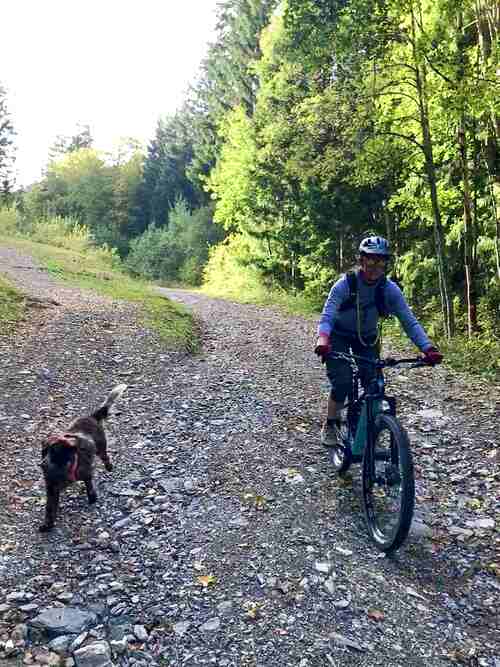
Before diving into the nitty-gritty of choosing your beginner mountain bike, let’s clear the air about mountain biking. It’s not your average Sunday afternoon ride through the park. No, it’s a thrilling adventure, a burst of adrenaline, and a date with the great outdoors.
Mountain biking is about tackling rugged terrains, conquering steep hills, and navigating challenging obstacles.
However, mountain biking is as extreme as you want it to be. You don’t have to scare yourself witless every time you ride. As long as you’re having fun, who cares if you don’t want to hit big jumps or tackle gnarly steeps? It also depends on your local terrain. You may live in a flat area or a mountainous one. Therefore, your riding style will vary, but I’ll go more into this later.
Benefits for Beginners: More Than Just Fun
As a beginner, mountain biking offers you a fantastic blend of benefits.
First, it’s a full-body workout without feeling like one. Pedaling, balancing, and conquering those hills build strength, stamina, and coordination. Plus, it’s an excellent way to lose yourself in the great outdoors while getting in shape.
Second, mountain biking is an awesome stress-buster. The fresh mountain air and the beauty of nature can do wonders for your mental well-being. It can be like meditation on two wheels, especially when you enter a flow state on a flowy downhill trail. The sheer thrill of it can be a potent antidote to the stresses of daily life.
Lastly, it’s a gateway to a vibrant community. You’ll meet fellow riders who share your passion, swap stories, and explore new trails together. It’s like joining an exclusive club where everyone is welcome.
Gear and Safety Essentials: You Can't Ride Without Them
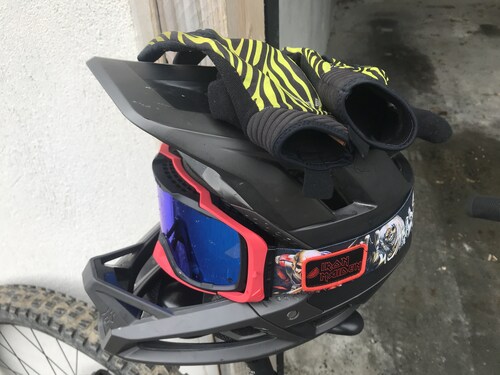
Safety first, right? Mountain biking, while thrilling, can also be challenging and unpredictable. You need the right gear to keep you safe and comfortable. Here are some must-haves for your mountain biking journey:
- Helmet: Protect your noggin! A good-quality helmet is non-negotiable. It’s your first line of defense against unexpected tumbles.
- Gloves: Gloves offer grip, comfort, and protection. Plus, they make you look super pro.
- Eye Protection: Sunglasses or goggles shield your eyes from dust, branches, and bugs.
- Hydration: Staying hydrated is crucial. Invest in a good water bottle or hydration pack.
- Clothing: Wear moisture-wicking, breathable clothing that suits the weather. Don’t forget padded shorts for added comfort.
- Tools and Spare Parts: Your trailside saviors are multi-tool, pump, and tire plugs. You never know when you’ll need them.
Safety and gear go hand in hand. Ensure you’re equipped for the ride, and you’ll have a blast while staying safe on the trails. Remember, the right gear isn’t just for looks; it’s your ticket to more fun and less worry on your mountain biking adventures.
Check out my mountain bike protection blogs for information and recommendations.
Types of Mountain Bikes: Finding Your Perfect Ride
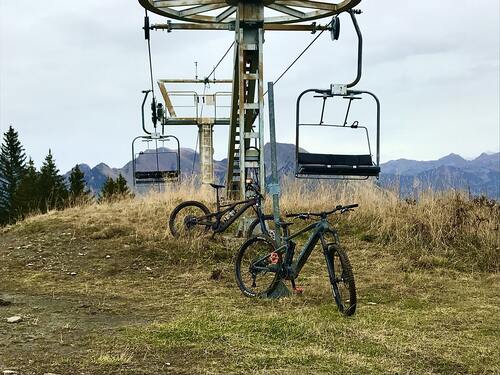
Now that you’re pumped about mountain biking and have a handle on the basics, it’s time to talk about the different types of mountain bikes. It’s a bit like choosing the right vehicle for your adventure. Each type serves a specific purpose, and knowing them can help you pick the perfect ride.
Hardtail vs. Full-Suspension: The Great Debate
At the heart of the mountain biking world, there’s a classic showdown – hardtail vs. full suspension. Let’s break it down:
- Hardtail: These bikes have a suspension fork in the front but remain rigid in the rear. They’re like the versatile all-rounder in the world of mountain bikes. Hardtails are great for beginners because they’re relatively simple, lightweight, and easier on the wallet. If you want a bike that can handle a bit of everything, including climbs and descents, a hardtail might be your best friend.
- Full-Suspension: These bikes have suspension both in the front and rear. They’re the kings of comfort when it comes to tackling rough terrain. Full-suspension bikes are your go-to if you’re aiming for big jumps, rocky descents, and a smoother ride overall. However, they tend to be pricier and more complex regarding maintenance. Also, they are not the best choice for complete beginners, as it’s best to get some basic skills under your belt before jumping onto a full-susser.
The Fab Four: Cross-Country, Trail, Enduro, and Downhill Bikes
Now, let’s delve into the four main categories of mountain bikes:
- Cross-Country (XC): These are the lightweight, agile racers of the mountain biking world. An XC bike might be your best bet if you’re into long rides, climbing, and fast descents on smoother terrain. They’re the marathon runners of the mountain biking family.
- Trail Bikes: As the name suggests, these bikes are versatile and built for the trails. They offer a nice balance of climbing ability and descending prowess. If you want a bike that can handle a bit of everything, from rolling trails to some technical challenges, a trail bike is your trusty sidekick.
- Enduro Bikes: These bikes are made for the gnarly stuff. Enduro bikes are like the adrenaline junkies of the family. They’re built to tackle steep descents, rocky sections, and jumps. If you’re the kind of rider who craves thrilling descents and doesn’t mind a bit of uphill grind, enduro bikes have your back.
- Downhill Bikes: Downhill bikes are the extreme sports cars of mountain biking. They’re designed for only one thing: charging down steep, technical descents. These bikes have long-travel suspension to soak up the bumps and drops. This is your ride if you’re a gravity junkie and live for those thrilling downhill runs.
Selecting The Right Beginner Mountain Bike for Your Needs
Now that you know the mountain bike family tree, how do you pick the right one for your needs? It’s like choosing the right tool for the job. Here are some pointers to help you decide:
- Consider Your Riding Style: Consider where and how you’ll be riding the most. Are you conquering long, cross-country trails or craving those epic downhill descents? Your riding style should guide your choice.
- Skill Level: If you’re new to mountain biking, a hardtail or a trail bike might be a safe bet. As you gain experience, you can step up to more specialized rides.
- Budget: Be honest about your budget. There are fantastic options in every price range, so don’t break the bank. A well-chosen bike within your budget will make you happier than stretching for a model you can’t afford.
- Try Before You Buy: Test-ride different bikes to see how they feel. It’s like trying on shoes – you’ll know which fits just right.
- Seek Advice: Don’t hesitate to consult experienced riders or bike shop experts. They can offer valuable insights and recommendations based on your specific needs.
Remember, your mountain bike is your ticket to adventure. Choose the one that suits you best, and you’ll be well on your way to conquering the trails with a grin from ear to ear.
Budget Considerations: Getting the Most Bang for Your Buck
Let’s go into one of the more practical aspects of your mountain biking journey – budget considerations. As a beginner, you might wonder how much you should spend and where to strike that perfect balance between quality and affordability.
How Much Should You Spend On A Beginner Mountain Bike?
The golden question. While the answer varies depending on your financial situation, you don’t need to break the bank to get started with mountain biking. As a beginner, you can find an entry-level bike for around $500 to $1,000. Don’t expect anything too fancy at this price. An entry-level bike will be a hardtail and have low-quality components. At this price point, you must be realistic about the bike’s capabilities and build quality. It should be fine for mellow trails, but you’ll eventually feel “under-biked” when your skills progress and you tackle gnarlier trails.
Now, if you’re willing to invest a bit more, say around $1,000 to $2,500, you can explore a wider range of options. This budget range opens the door to full-suspension bikes and more features like improved components and lighter frames. It’s like leveling up your mountain biking experience.
For those with a more generous budget exceeding $2,500, you can venture into premium territory. Here, you’ll find top-notch full-suspension bikes with high-end components, making your rides smoother and more enjoyable. It’s like upgrading from a standard car to a luxury SUV.
Balancing Quality and Affordability: Finding Your Sweet Spot
Now, let’s talk about the balance between quality and affordability. It’s essential to get the most value for your hard-earned cash.
- Don’t Skimp on Safety: Invest in a good-quality helmet and other safety gear. Your well-being is worth every penny. You’re putting yourself at risk if you spend all your money on your bike and can only afford a cheap helmet.
- Consider Used Bikes: If your budget is tight, you may want to think about buying a used bike. Just make sure to inspect it thoroughly, or better yet, bring an experienced friend along.
- Component Quality: Pay attention to the bike’s components. Even an entry-level bike with quality components can outperform a poorly made, high-priced bike.
- Consider Future Upgrades: Think about whether you’ll want to upgrade your bike in the future. Mountain bikes can be customized and improved as you progress, saving you money in the long run.
- Warranty and Support: Check the manufacturer’s or bike shop’s warranty and after-sales support. It’s essential in case you encounter issues later.
Sizing and Fit: Find Your Mountain Bike Soulmate
Getting the right bike size is like finding your mountain bike soulmate. It’s crucial for a comfortable and enjoyable riding experience. A bike that’s too small or too large can lead to discomfort, reduced control, and even potential injuries. To choose the right fit, measure your inseam and use manufacturer-size charts. Remember, different brands may have slight variations, so don’t hesitate to ask for expert guidance at a local bike shop. Trying the bike in person is the gold standard for ensuring the perfect fit. It allows you to test the comfort, reach, and handling. However, if you buy online, ensure the seller has a flexible return policy if the sizing doesn’t match your expectations.
But buying a bike that doesn’t fit you perfectly isn’t the end of the world. You can do a few things to dial in the fit, such as handlebar adjustments and different length cranks.
Components and Features: The Heart of Your Ride
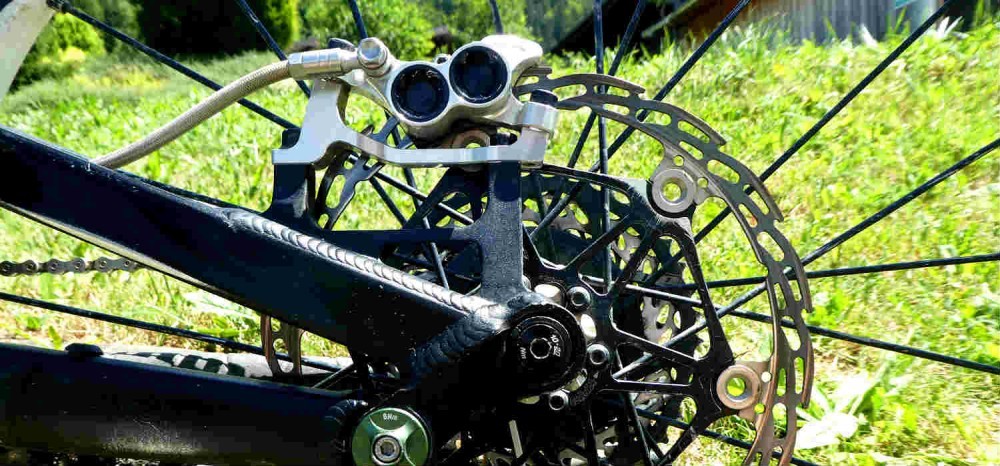
Understanding the components and features of your mountain bike is like getting to know the heart of your ride. The frame, wheels, and brakes are the backbone of your bike. Frame materials like aluminum and carbon affect weight and durability, while wheel size and type impact your bike’s handling and terrain suitability. Brakes are essential for control and safety, with disc brakes being the norm for mountain bikes.
Now, let’s talk about gear ratios and features. A simpler 1x drivetrain is often recommended for beginners, as it reduces complexity and provides a wide range of gears for various terrains. Features like dropper posts and tubeless tires can enhance your riding experience by improving comfort and traction.
Brand Recommendations: Trusted Names in the Game
When choosing a mountain bike brand, relying on trusted names in the game is wise. For beginners, brands like Giant, Trek, and Specialized have a solid reputation for producing high-quality, reliable bikes. They offer budget-friendly options that cater to entry-level riders, providing a perfect balance between price and performance.
However, there are other reputable brands like Scott, Cannondale, and Kona, which also offer excellent options for beginners. Each brand has unique strengths and might have models tailored to specific riding styles, so it’s essential to consider your preferences and research their pros and cons before deciding.
Where to Buy Your First Mountain Bike: Local Shops vs. Online Retailers
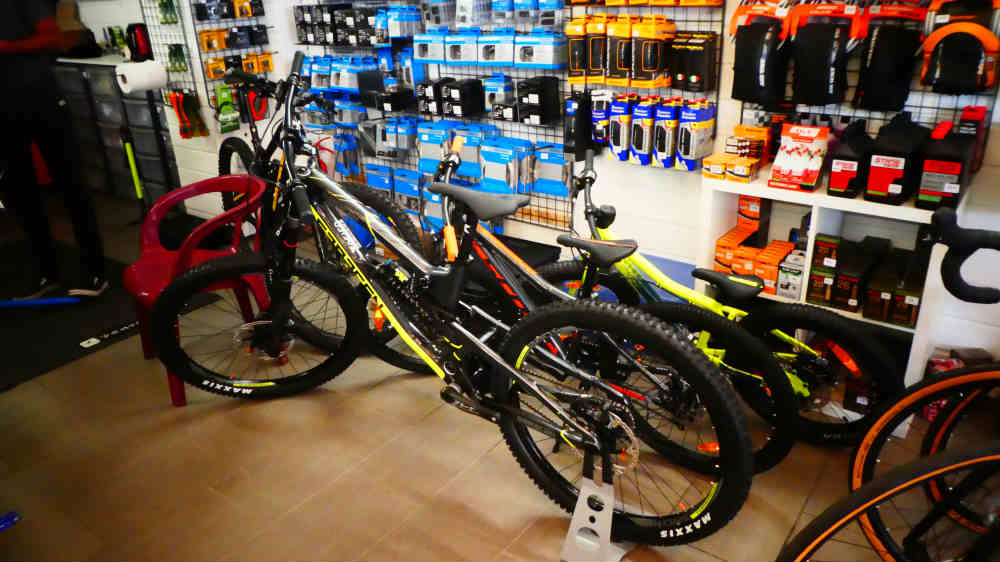
The decision of where to buy your first mountain bike boils down to your personal preferences and circumstances. Local bike shops provide the advantage of in-person service, allowing you to test ride bikes and receive expert advice. They can help you find the perfect fit and may offer post-purchase maintenance support.
On the other hand, online retailers often provide a more comprehensive range of options and may offer competitive prices. However, buying online means you won’t have the opportunity to test the bike before purchase, so it’s crucial to research and choose a reputable seller with a flexible return policy.
Lastly, consider warranty and support options. Local shops often provide more personalized after-sales support, but reputable online retailers also offer warranty coverage and customer service, so check the details before deciding.
Final Thoughts On A Beginner Mountain Bike
You now have a wealth of knowledge to help you embark on your exciting mountain biking journey. Choosing the right mountain bike is a pivotal first step, and you’re well-prepared to make an informed decision.
As you dive into mountain biking, remember the importance of sizing and fit, the role of components and features, and the value of selecting the right brand. Your mountain bike isn’t just a piece of equipment; it’s your passport to thrilling adventures, breathtaking vistas, and a new world of possibilities.
Don’t hesitate to explore my website for more tips, gear reviews, and destination recommendations. I’m here to support you every step in your mountain biking endeavors. Whether you’re a beginner or a seasoned rider, I’d love to hear your questions, experiences, and thoughts. Feel free to drop them in the comments box below. Let’s build a vibrant community of mountain biking enthusiasts together. So, grab your helmet, tighten those shoelaces, and hit the trails. Your mountain biking adventure awaits!
